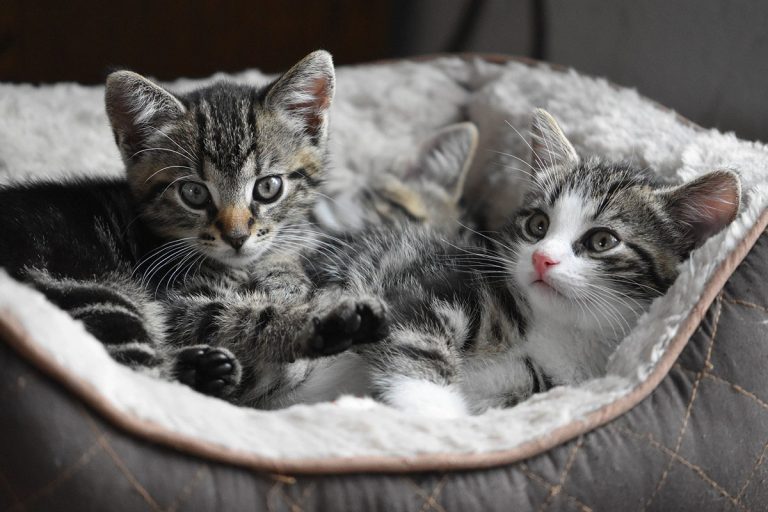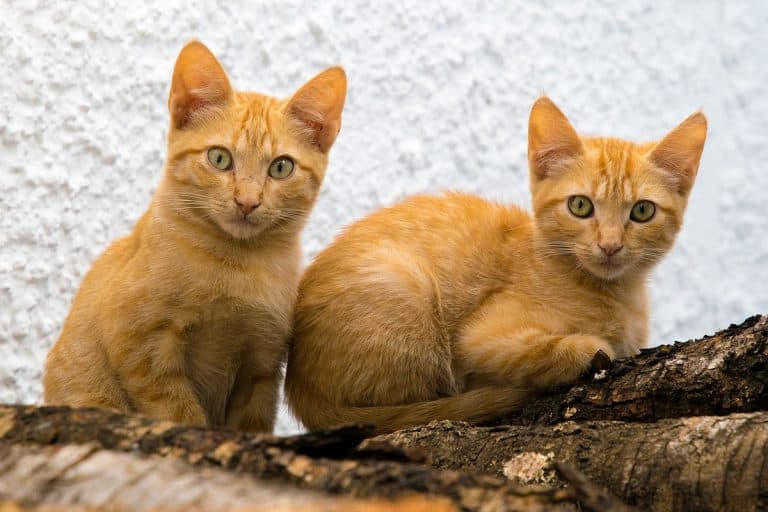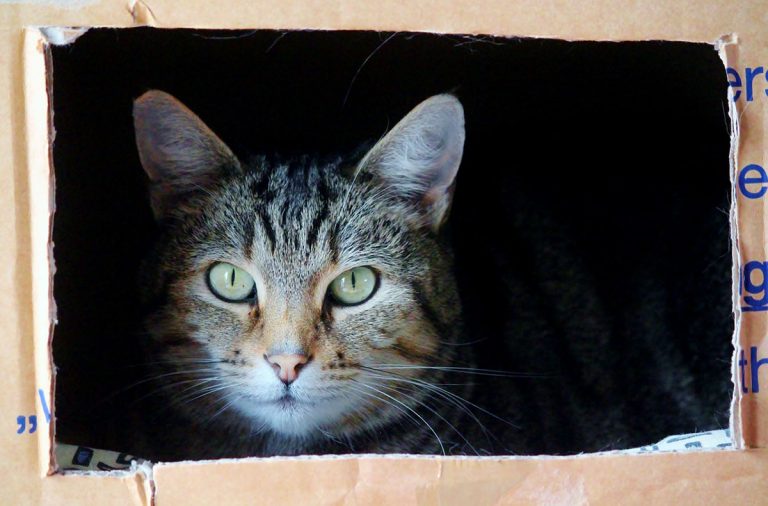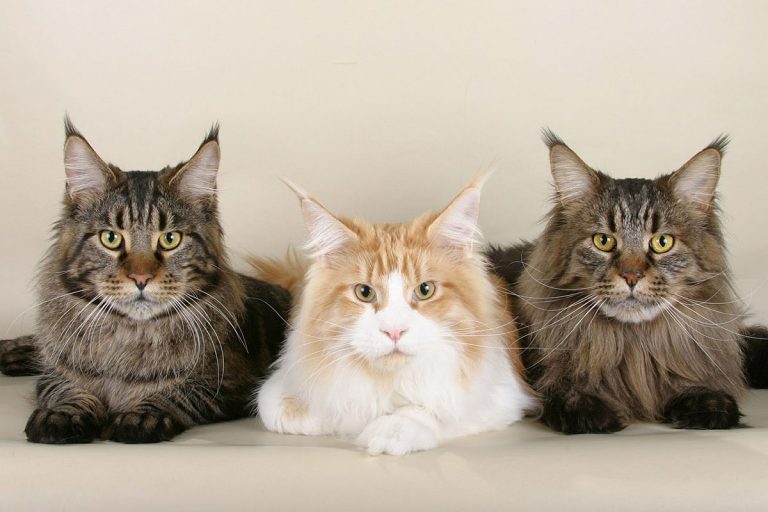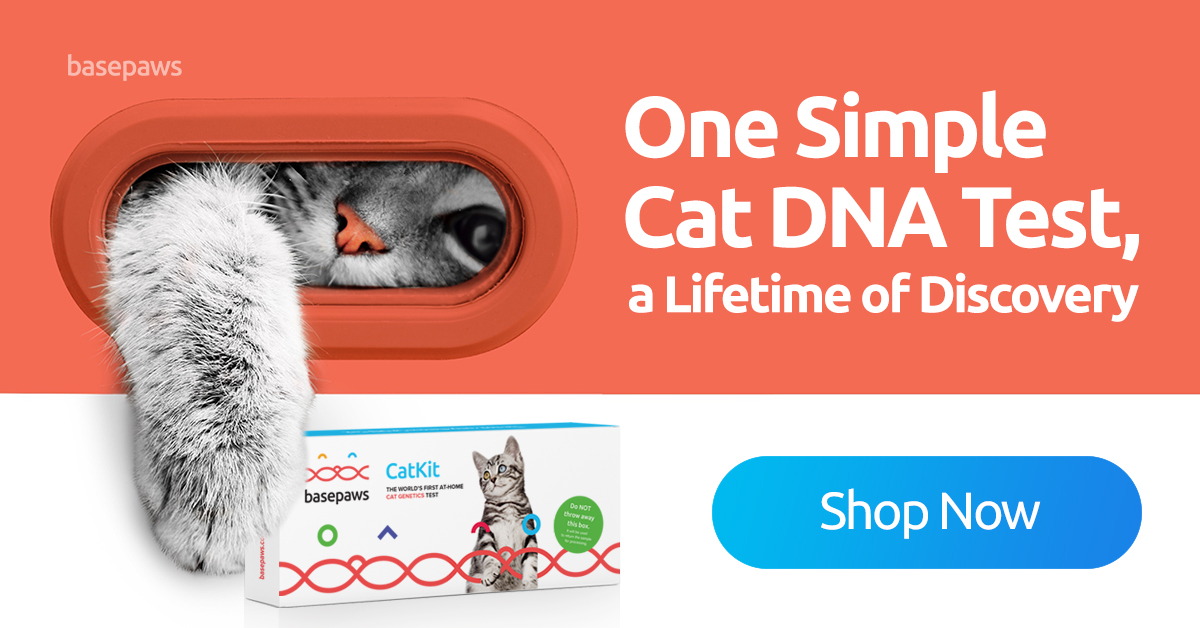Cats like running water. So it’s not that unusual to find a cat drinking from the sink instead of their water bowl. It might seem strange at first and leave you wondering: “Why does my cat drink from the sink? Is this something I should be worried about?”.
But there are good reasons why cats like running water better than still water. In this article we’ll explain why cats drink from the sink. Plus we give tips on how you can keep your cat out of the sink and off of counter tops.
DISCLAIMER: This post may contain affiliate links. If you click one of these links and decide to make a purchase, we may receive a small commission. This comes at no extra cost to you and helps to keep the site alive and up to date. If you want more information, please review our Privacy Policy. Thank you for your support!
Why Does My Cat Drink From The Sink?
One obvious reason why cats like running water better than still water is that it moves. Some cats don’t jump on the sink to drink from it, but rather to play and swat at the flowing stream. When my cats were kittens, I used to entertain them by turning on the faucet for only a second and then make them wait for the next drop. It was one of their favorite games.
Another reason why cats like running water is because it’s fresh. When you put out a bowl of stagnant water and leave it sitting even for a day, not only will it start to collect hair, dust and grime, the water itself will become kind of dead.
Natural spring water is full of nutrients, minerals and oxygen, which get absorbed by the body when you (or your cat) drink it. Of course, tap water is not the same as spring or mineral water. It has a lower quality than water straight from the source, but it still provides a lot more oxygen and minerals than a bowl of still water. Your cat can taste the difference. That’s why cats like running water and why your cat drinks from the sink.
How Much Water Do Cats Drink?
The amount of water a cat needs on a daily basis is 0.8 ounces per pound of body weight, or approximately 50 milliliters per kilogram. A cat’s water intake comes from drinking, as well as their cat food. The amount of water cats get from their food varies due to the moisture content, but it is typically about 20% of their daily water intake.
Cats need a lot more fluids compared to humans, because they have an increased metabolism and lack sweat glands like we do. They also produce more concentrated urine, which needs to be diluted to reduce the risk of Feline Lower Urinary Tract Disease. Always leave out a fresh water supply for your cat.
If your cat drinks from the sink, they obviously prefer running water. Listen to that and find a way to give them that, and still keep your cat off the sink.
Increased Thirst In Cats
When you find that your cat is drinking more water than usual, or suddenly your cat drinks from the sink when they have never done that before, it is time to take your cat to the vet. If the change is sudden and severe, it might be a sign of poisoning and you’ll have to act quickly.
A more gradual increase in thirst is usually the first sign of diabetes or chronic kidney disease. Either one can take months, or even years, to develop to a point where you actually start noticing it. When you do, your vet can do a blood and urine analysis to determine what is wrong and how far it has progressed. For me, finding my cat drinking from the sink was actually what first led me to suspect her kidneys might be failing and, sadly, I was right.
Still, cats with either diabetes or chronic kidney disease can live long happy lives with the help of specialized diets and supplements. My cat is still going strong and hasn’t progressed too much over the last two years. Nevertheless, I monitor the situation closely. So should you if your cat has a chronic illness, because their needs may change during the course of the disease.
Related Post: Is Pet Insurance Worth It For Indoor Cats?
Is pet insurance worth it for indoor cats? Read this guide to learn about pet insurance for cats and calculate if it is really worth it for your indoor cat.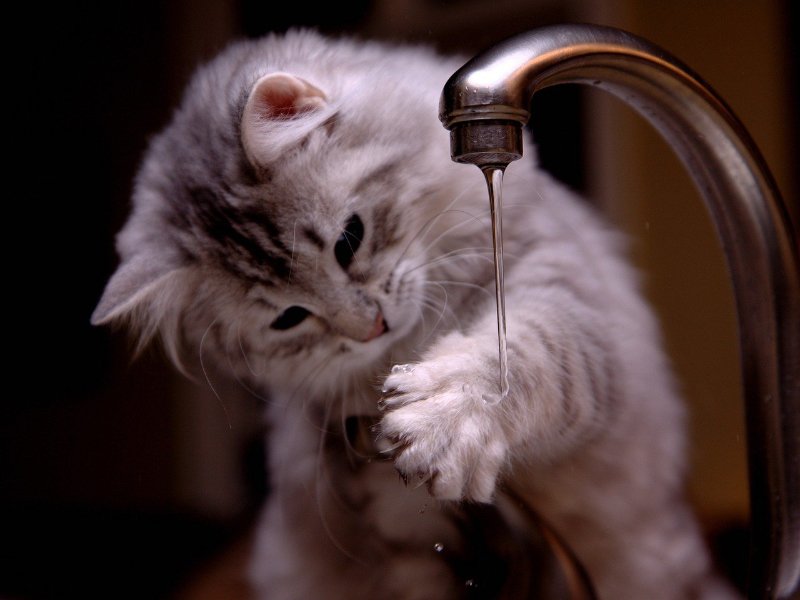
Signs Of Dehydration In Cats
Just like humans, cats can become dehydrated. Common signs of dehydration in cats include dry mouth and tongue, fatigue (acting more sleepy than usual) and poor skin elasticity. In extreme cases, it may cause them to suffer from urinary tract infections or kidney problems.
If you suspect your cat may have become dehydrated, there are a few ways to treat it:
- Provide plenty of fresh, clean water for your cat to drink.
- You can also give them some extra wet food, or anything else that contains fluids.
- If your cat is not willing to drink on its own, use a syringe to feed it to them directly. Or see if you can get your cat drinking from the sink.
- If you notice the signs of dehydration becoming worse or they last for more than 2 days, then take your cat to see a vet immediately and get treatment.
Read our article on the 12 Signs Of Dehydration In Cats to find out everything there is to know about feline dehydration and more tips on how to rehydrate a thirsty cat.
How To Keep Cat Out Of Sink
Letting your cats walk on your counter tops can be a health risk. Cats can track all sorts of filth onto the counter that may contaminate any food, dishes or utensils that you have on there.
If you’re not prepared to wipe down the sink every time your cat has put her dirty paws on it, then you may want to consider counter training her. But exactly how do you keep your cat out of the sink?
Counter Train Your Cat
Dogs like counter hopping just as much as cats do. That’s why most puppy training plans include some form of counter training, where the dog is taught to stay on the floor. You might think that you can’t train your cat like that, but you’d be wrong.
First, you need to make the sink or counter as unappealing as you can. Lay down some aluminum foil or double sided tape. This will feel icky on her paws and gently encourages her to jump off. Or put stuff down to prevent her from jumping on at all, like hair brushes and shampoo bottles. Don’t worry! They won’t need to stay there forever.
Second, you need some form of reinforcement to make clear that the sink is off limits, just in case she does jump on. Don’t yell at your cat or throw things at her. Don’t spray her with water either. Just say “No” in a clear voice and gently push or lift her off the sink and onto the floor. Instead of saying something, you can also use a clicker, or just snap your fingers.
The key is to be consistent. Cats are quite intelligent and the average house kitty can easily learn to distinguish between at least half a dozen commands, if they are provided clearly and consistently. Whether or not they will respond can still depend on their mood, though. 🙂
Either way, it won’t take long for your cat to catch on to what you’re doing, and then a simple “No” (or click, or snap) will suffice to tell her whenever she is crossing the line. No sticky tape or shampoo fortress needed!
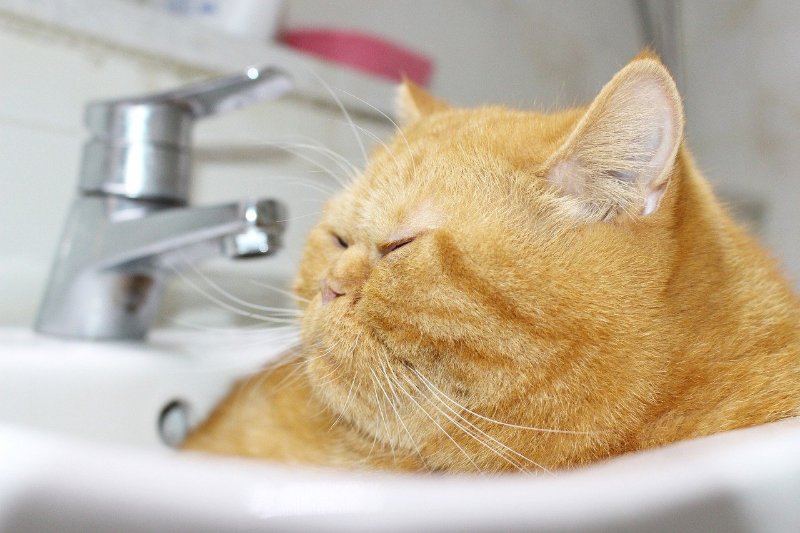
Provide Better Alternatives
Another way to prevent your cat from jumping on high surfaces, including the sink, is to provide her with better alternatives. Then she won’t want to jump on them and your problem is solved!
As we’ve established by now, cats like running water. If your cat’s deal with the sink is all about the running water, then the solution is quite easy: get her an automated water fountain, such as the Cat Mate pet fountain. These pet drinking fountains exist in all shapes and sizes and provide a great alternative to the old drinking bowl. The main thing to look for is a fountain that is quiet and basically indestructible. You’d be surprised how easily your cat can demolish something that took you an hour to put together (I’m only slightly exaggerating…).
However, if your cat gets on the sink because they like to climb on top of everything, then you’ve got a so-called “tree dweller” on your hands. In this case it will likely take more than a cat fountain to keep your cat off the sink.
Tree dwellers like to find places up high to rest their bones and look out over their territory. This is important for their confidence and mental well-being. So, if you take away their counter top access, you’ll have to give them something in return, or you’ll end up with unhappy, rebellious cats. Invest in a big cat tree, or hang up some high shelves especially for them. Anything to feed that inner wild cat!
Provide A Clean Water Supply
Whether you use a drinking bowl or a pet fountain, the important thing is to always keep it fresh and clean.
If you use a drinking bowl, make sure it doesn’t have any cracks where bacteria can nestle and that the water is fresh. If you are using tap water to fill your pet’s drinking dishes, be sure not to let chlorine or other chemicals react with the dish by adding a few teaspoons of lemon juice per gallon of water before filling up the bowl. Wash all bowls thoroughly at least once a day until they’re completely clean and dry them off completely using paper towels.
When cleaning a pet fountain, disassemble all loose parts and wash them individually. Pay extra attention to any folds, creases and rims. Those are the first places where grime and bacteria tend to build up.
If your pet fountain includes a pump, be sure to take it off and check the in- and outlet of the pump for any grime or calcification. Clean it thoroughly with pipe cleaners and vinegar before placing it back. Over time, you might find that the pump starts making more noise due to calcification on the inside. At this point, you should consider replacing it. Or, if you feel confident enough to do it, you can take it apart and carefully clean the insides with an old toothbrush.
Always stay on top of cleaning off any grime or bacteria in order to avoid sicknesses. But if your pet does happen get ill, then take them into the vet right away! Even if it turns out to be nothing, it’s better to be safe than sorry. Untreated feline diseases at a young age can lead to serious health risks when they are older.




